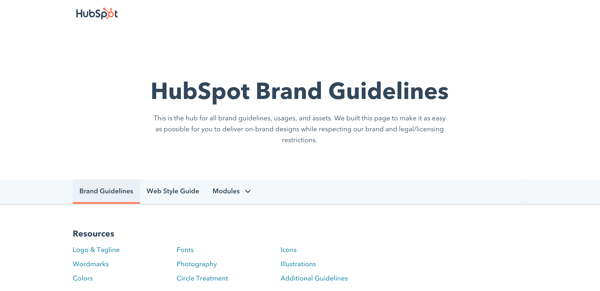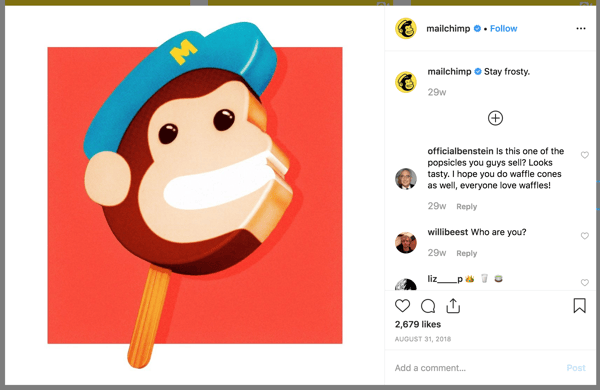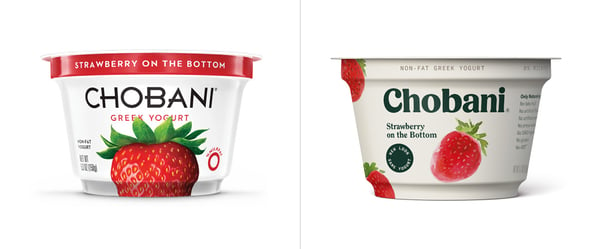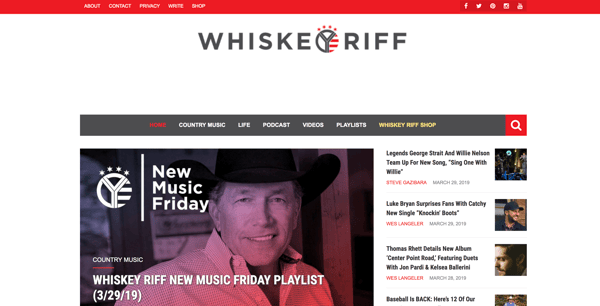How To Use Blogs For Personal Branding
Products are never just products, right? Coca-Cola is more than a soda. Starbucks is more than a coffee. Ray-Ban is more than a pair of sunglasses. Glossier is more than a tube of concealer. Interacting with these products provide experiences, and we buy them with that experience in mind. Better yet, the companies that create and market them know exactly the experience they want you to have when you make (or consider) a purchase. That's why they create a brand. From the language in their Instagram caption to the color palette on their latest billboard to the material used in their packaging, companies who create strong brands know that their brand needs to live everywhere. They know their names extend far beyond the label. The result? These brands are known, loved, and chosen out of a long lineup of options. Who doesn't want that? I know I do. That's why we built this guide — to equip you to create and manage a strong brand that'll help your business be admired, remembered, and preferred. Use the links below to jump ahead to sections of interest, and don't forget to bookmark this guide for later. Before I dive into the importance of branding and how to build a brand, let's go back to basics: What is a brand? A brand is a feature or set of features that distinguish one organization from another. A brand is typically comprised of a name, tagline, logo or symbol, design, brand voice, and more. It also refers to the overall experience a customer undergoes when interacting with a business — as a shopper, customer, social media follower, or mere passerby. Branding is the process of researching, developing, and applying a distinctive feature or set of features to your organization so that consumers can begin to associate your brand with your products or services. Branding is an iterative process and requires getting in touch with the heart of your customers and your business. It's important for a variety of reasons — I dive into these next. Your brand is arguably one of your organization's most important assets. It gives your organization an identity, makes your business memorable, encourages consumers to buy from you, supports your marketing and advertising, and brings your employees pride. Branding can be the deciding factor for consumers when they make a purchase decision. In a 2015 global Nielsen survey, almost 60% of shoppers said they actively buy from brands they know, and 21% said they bought a product because they liked the brand. Branding gives your business an identity beyond its product or service. It gives consumers something to relate to and connect with. Branding makes your business memorable. It's the face of your company and helps consumers distinguish your business across every medium (which I discuss later). Branding supports your marketing and advertising efforts. It helps your promotion pack that extra punch with added recognition and impact. Branding brings your employees pride. When you brand your company, you're not only giving your business identity, you're also creating a reputable, highly-regarded workplace. Strong branding brings in strong employees. Here are some other brand-related buzzwords you should know. They further demonstrate the importance and value of branding your business. Brand awareness refers to how familiar the general public and your target audience is with your brand. High brand awareness leads to brands being referred to as "trending," "buzzworthy, or "popular." Brand awareness is important because consumers can't consider purchasing from your brand if they're not aware of it. 👉🏼Strong branding makes your business known. Brand extensions are when companies "extend" their brand to develop new products in new industries and markets. Consider Honda lawn mowers or Martha Stewart bedding. Brand extensions allow companies (or individuals) to leverage brand awareness and equity to create more revenue streams and diversify product lines. 👉🏼 Strong branding brings in more money. Brand identity is the personality of your business and the promise you make to your customers. It's what you want your customers to walk away with after they interact with your brand. Your brand identity is typically comprised of your values, how you communicate your product or service, and what you want people to feel when they interact with it. 👉🏼 Strong branding gives your business more than a name. Brand management refers to the process of creating and maintaining your brand. It includes managing the tangible elements of your brand (style guide, packaging, color palette) and the intangible elements (how it's perceived by your target audience and customer base). Your brand is a living, breathing asset, and it should be managed as such. 👉🏼 Strong branding requires consistent upkeep. Brand recognition is how well a consumer (ideally in your target audience) can recognize and identify your brand without seeing your business name — through your logo, tagline, jingle, packaging, or advertising. This concept goes hand-in-hand with brand recall, which is the ability to think of a brand without any visual or auditory identifiers. 👉🏼 Strong branding keeps your business top-of-mind. Real-life brand example: Want to test your brand knowledge? Take this Logo Quiz by Business Insider to see how well you know your corporate brands. This is brand recognition at work. Brand trust refers to how strongly customers and consumers believe in your brand. Do you deliver on your marketing promises? Do your salespeople and customer service go above and beyond? These things can create trust among your customers, which is important in a world where a mere 25% of people feel confident in large businesses. 👉🏼 Strong branding builds trust with your customers. Brand valuation is the commercial valuation of your brand derived from consumer perception, recognition, and trust. This concept goes hand-in-hand with brand equity. A powerful brand can make your business invaluable to investors, shareholders, and potential buyers. 👉🏼 Strong branding increases your business's value. Want to build an effective, measurable brand? Download our free guide on How to Build a Brand. Here's how you can create a brand — or begin the process of rebranding your current one. There's a lot that goes into a brand, and there's a lot to consider when building a strong one. So, grab a notebook and jot down ideas as you move through this section. Recognize that branding is an iterative process, so you might be repeating some of these steps as you brainstorm and build your brand. Branding leads to awareness, recognition, trust, and revenue. We've talked about that. But let's take a step back and understand where those stem from: consumers. And not just any consumers — your target audience and customers. If your brand doesn't resonate with your audience, it won't lead to that awareness, recognition, trust, and revenue. That's where target market research comes in. Before pressing pen to paper (or cursor to digital document), you must understand to whom your branding will be speaking. Who does your product serve? Who is your ideal customer? Why did you create your business in the first place? What you learn about your target market and buyer personas will influence your branding decisions down the line, so make this step your first priority. Download our free Persona Templates to easily organize your target audience research and strengthen your marketing. Let's return to a question I asked in the previous step: Why did you create your business? Answering this will help you build your mission statement, which defines your purpose and passion as an organization. Before you can craft a brand that your audience recognizes, values, and trusts, you must be able to communicate the purpose that your business provides. Then, every part of your brand (logo, tagline, imagery, voice, and personality) can reflect that mission and vision. Your mission statement is a building block of your brand manifesto, which encompasses why your organization exists and why people should care about your brand. Download our free guide to Defining Inspiring Mission and Vision Statements and learn the ins-and-outs of two of the most valuable strategic planning elements for businesses. There are probably lots of businesses in your industry and niche. It's easy to focus on your competition (and there's a time and place for competitive analysis), but, for now, let's focus on you. What's one thing that your business has that no one else can mimic (er, legally)? Your brand. Because of that, you must ensure that your brand is comprised of and inspired by elements that are solely yours: the values, benefits, and qualities that make your company unique. Take a moment to jot down a list of what sets your business apart from others. I'm not talking about product features (like appearance, components, or capabilities); I'm referring to how your products or services improve lives and contribute to success. Real-life brand example: Alani Nutrition You've probably never heard of Alani Nu; they're a nutrition company based in my hometown of Louisville, Kentucky. I order their vitamins because 1) they're proven to work, and 2) I trust and respect the brand (and it's gorgeous!). On their website, they've clearly and simply outlined their unique values and benefits as part of their overall brand. Highlighting these makes it easy for customers like me to trust their products and choose them over competitors. At this point, you should understand your target audience, your mission statement, and the unique qualities that make up your business. If you can say with confidence that you've mastered these steps, it's time to move onto one of the more exciting parts of branding — the visual design. We're talking about your logo, color palette, typography (fonts), iconography, and other visual components. As you create these elements, build a set of brand guidelines (or a brand style guide) to govern the composition and use of your visual assets. This will ensure that whoever uses your new branding does so accurately and consistently. Check out HubSpot's brand guidelines for reference. Note: Design can be just as intimidating as it is exciting. Consider hiring a professional with logo and identity design experience or starting with a few helpful design templates. Take your brand to the next level with this free e-book on creating a brand style guide. Download templates, too! Next, consider the auditory component of your brand. What would your brand sound like if you had a conversation with it, or if it texted you? How you communicate with your target market is also considered part of your branding. You want to define a brand voice that connects and resonates with your audience — otherwise, they probably won't pay attention. Because of that, don't hesitate to return to step one to get familiar with to whom you're speaking. From your advertising campaigns and social media captions to your blog posts and brand story, ensure your tone is consistent throughout all of your written content. Give your audience a chance to get familiar with your brand and learn to recognize the sound of your voice. Better yet, master a fun, entertaining voice, and your customers will look forward to your social media and email updates. Real-life brand example: MailChimp MailChimp is a great example of a brand that speaks with a clear, consistent tone. When I used their free plan for my small business, I always chuckled when receiving their emails and working in their interface. From its web copy to its email blasts and social media captions, MailChimp has established a brand voice and personality that is personable, fun, and accessible — it can be hard to explain the technical parts of a software product (like A/B testing), but MailChimp has mastered that, too. Your brand only works if you do. Once you finish designing and creating your new brand (or rebrand) integrate it throughout every inch of your business. Pay extra attention to ensure it's displayed anywhere your business touches customers. Here are a handful of tips for applying your brand across your organization. Splash your logo, color palette, and typography across your website. Don't use anything but your predefined assets in your brand guidelines. Your website is a major part of your company identity — if it doesn't reflect your brand, it will only provide a jarring customer experience. Also, be sure that all web copy, calls-to-action, and product descriptions reflect your brand voice. All profile photos, cover art, and branded imagery should reflect your brand. Consider putting your logo as your profile photo — this will make it easier for customers to recognize your business. As with your website, be sure all profile information, posts, and captions reflect your brand voice. If you have a physical products business, your product is probably the most tangible way that customers interact with your brand. For that reason, your packaging should reflect your new branding — in its design, colors, size, and feel. Real-life brand example: Chobani I love Chobani yogurt (confession: I'm eating it right now). Their new branding immediately tells me that they produce authentic, healthy Greek yogurt. That's one of the main reasons I buy Chobani. Recently, I realized that their yogurt packages are made with a very earthy, textured material — an intentional decision that supports the overall experience they've paired with purchasing and eating the Chobani brand. Because advertisements (digital and print) are often used to establish brand awareness and introduce consumers to your brand, it's critical that they reflect your branding. In fact, your branding should make the ad creation process easier — with your brand style guide, you already know how your ads should appear and what type of copy to write. A brand is only as powerful as the people behind it, and if your people aren't putting your brand to work, it won't work for you. Moreover, your brand applies to more than your marketing. Inform your sales and customer service folks of your brand guidelines and tell them to use it, especially when they engage directly with customers. Whether they are sharing a branded product demo or answering customer support inquiries, encourage them to use your logo, tagline, imagery, and brand voice. Download our Essential Guide to Branding Your Company to learn everything you need to go from same-old business to must-have brand. To best wrap your head around the branding process, think of your brand as a person. Your brand should have an identity (who it is), personality (how it behaves), and experience (how it's remembered). Ask yourself these questions about your brand: The purpose of branding is to create relationships with your customers. The easiest way to do this is to treat your brand as a person and understand that you want your customers to do the same. Real-life brand example: Whiskey Riff Whiskey Riff is another brand you're probably not familiar with. It's a two-man media company based here in Chicago that's dubbed themselves "the most entertaining country music site ever". I'm a fan because I love country music, enjoy their written and podcast content, and proudly wear some of their awesome apparel. If Whiskey Riff was a person, here's how I'd think it would answer the questions above: Inconsistency is the number one branding mistake that companies make. Inconsistency undermines your brand and confuses your customers. Recognizable, valuable brands prioritize consistency — and they reap the benefits. When your brand is a unified presence across mediums and platforms, customers can easily get familiar with, recognize, and come to prefer your brand over time. Brand guidelines can help with this initiative. A brand strategy is more than your brand guidelines; it's a plan with specific, long-term goals that can be achieved as your brand evolves. These goals typically revolve around your brand's purpose, emotion, flexibility, competitive awareness, and employee involvement. Remember how I said that branding is a continuous process? There's a lot that goes into it. A brand strategy can help you turn that process into a well-oiled practice that keeps your brand moving toward success and recognition. Competitive analysis is important. Not only does it educate you on where your competition stands and how they are excelling, but it can also give you ideas on how you can improve or further set apart your brand. However, be conscious to not fall into an imitation trap. Keep your competitive research limited and focus on what your organization brings to the table. Just because a competitor (or two) has branded their company in a certain way doesn't mean that you have to follow suit. New, unique, provocative brands are memorable brands. Strong branding makes your employees proud. I know I'm proud to be associated with HubSpot, much less work there. Leverage your branding to attract talented people. If hiring is a strong initiative for your organization, dedicate some of your resources to employer branding. Employer branding is how you market your company to job seekers and current employees. If you're publically proud of your organization, others will be, too. Branding is your organization's name, logo, color palette, voice, and imagery. It's also more. It's that intangible feeling your customers have when they interact with your brand. You know … that experience we talked about in the beginning. That's how powerhouse brands deviate from all the others. The tangible components contribute to this — a gorgeous logo, a clever tagline, an authentic manifesto, and a clear brand voice — but truly strong brands thrive when they focus on the big picture of their brand. Get to the heart and soul of your target audience and your organization, and a successful brand will follow. 
What is Branding?
The Importance of Branding
Branding Terms to Know
How to Create a Brand
Branding Tips for Small Business
What's a brand?
What is branding?
The Importance of Branding
Branding Terms to Know
Brand awareness
Brand extension
Brand identity
Brand management
Brand recognition

Brand trust
Brand valuation
How to Create a Brand
1. Determine your target audience

2. Establish your mission statement
3. Define your unique values, qualities, and benefits

4. Create your visual assets

5. Find your brand voice
 Source
Source 6. Put your branding to work
Website
Social media
Packaging

Advertising
Sales and customer service
Branding Tips for Small Business
Treat your brand as a person

Prioritize consistency
Build and follow a brand strategy
Don't let inspiration turn into imitation
Use branding to hire
Ready, Set, Brand


Originally published Mar 3, 2021 5:09:11 PM, updated June 25 2021
How To Use Blogs For Personal Branding
Source: https://blog.hubspot.com/marketing/branding
Posted by: higginbothamfacking.blogspot.com

0 Response to "How To Use Blogs For Personal Branding"
Post a Comment